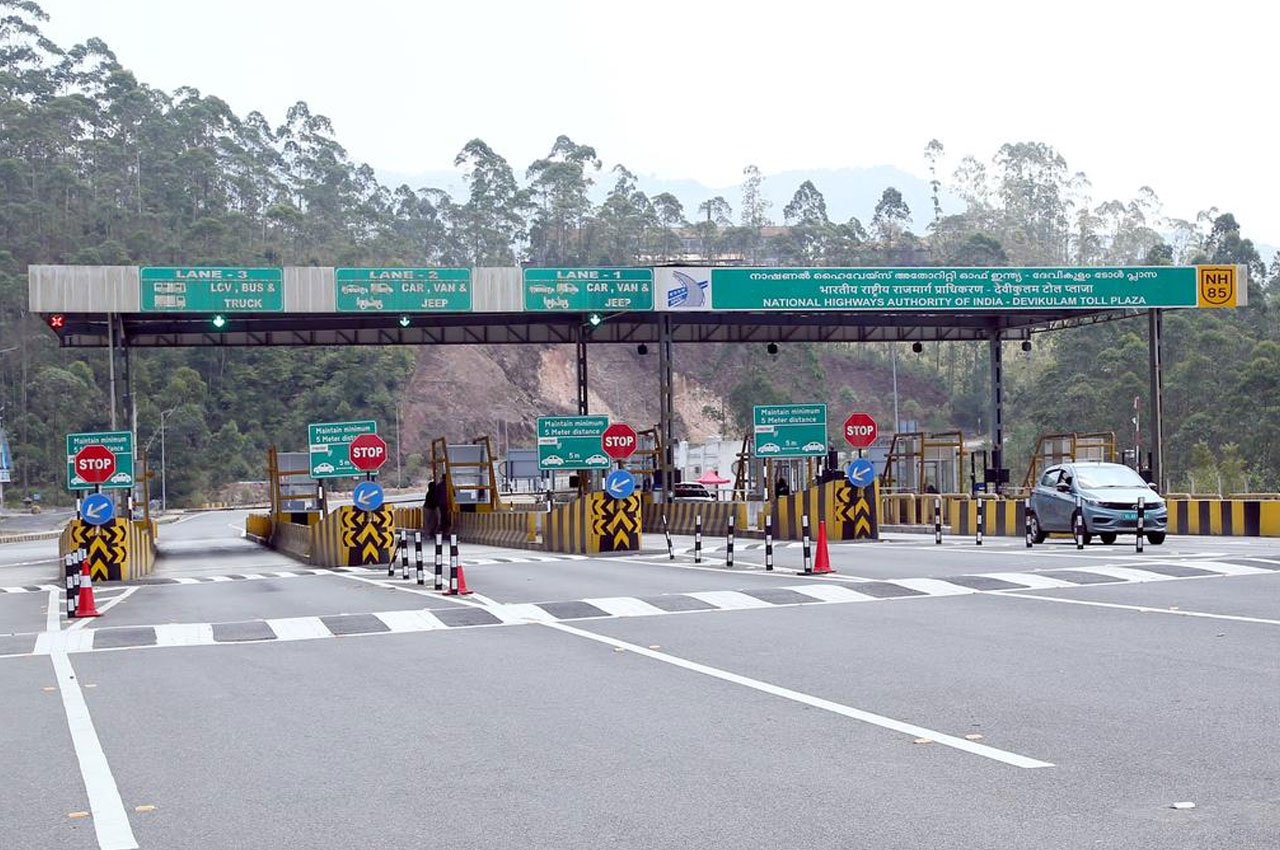Government Reduces Toll Charges by Up to 50%. Photo Credit: The Hindu
The central government has announced a major toll reform, reducing toll charges by up to 50% on national highways that feature bridges, tunnels, flyovers, and elevated sections, effective from July 2. According to The Hindu, this change is part of an amendment to the 2008 National Highways Fee Rules, offering significant relief to commuters—particularly commercial vehicle operators—while maintaining revenue collection to support infrastructure development.
What Changed in Toll Calculation
Previously, vehicle users were charged tolls based on a structure-multiplier model: each section with a bridge, tunnel, or flyover counted as ten times its length under the fee rules. Under the new structure-based formula, toll fees will now be calculated on whichever is lesser: either “ten times the length of structures plus the remaining road length” or “five times the total length of the road segment,” effectively halving the toll cost on heavily structured stretches.
How the New Toll Rules Work in Practice
For instance, on a 40 km highway segment made entirely of structures, the toll calculation now uses the lesser of 400 km (10×40 km) or 200 km (5×40 km). The result: tolls are charged as if the road is 200 km long—marking a full 50% cut compared to earlier approaches. In segments combining structures and open road, the same rule applies, ensuring fairness across different terrains.
Who Gains the Most
This reform offers immediate financial benefits to commercial logistics operators who traverse structure-heavy corridors, as well as long-distance private motorists using expressways. A senior National Highways Authority of India (NHAI) official noted the previous model aimed to offset elevated construction and maintenance expenses. The new rules balance fiscal prudence with commuter affordability.
Policy Shift Rooted in Equity
Transport ministry officials say the change is part of a broader effort to rationalize toll charges and promote highway usage without overburdening users. By cutting tolls up to 50% on segments with expensive infrastructure, the government hopes to encourage higher traffic volumes by reducing out-of-pocket costs.
Economic and Infrastructure Implications
Reduced tolls may benefit road-based commerce by lowering transport costs, potentially reducing goods prices. It could also encourage private investment in new highway projects. Conversely, toll reductions could slightly delay recovery of construction costs and affect the profitability of concessionaire models—though officials believe the impact is manageable given increased usage projections.
What Users Should Know
The new rules take effect on July 2 and apply to both public-funded and privately managed toll plazas. For public-funded toll points, reductions will be visible at the next scheduled fee revision, while concessionaire-operated plazas will implement them upon the expiry of existing agreements. This phased roll-out ensures stakeholders have time to adjust.
Broader Reforms in Toll Management
This adjustment comes alongside ongoing efforts to modernize toll collection via FASTag—the nationwide electronic tolling system launched in 2014. The government is also exploring annual pass systems, satellite-based electronic tolling, and barrier-free plazas to further reduce congestion and processing times.
The Big Picture
By reducing toll charges on highways with bridges, tunnels, flyovers, and elevated tracks, the government aims to ease travel costs, empower logistics sectors, and enhance road infrastructure use. Aligned with broader reforms like FASTag and expressway expansion, this toll rationalization marks a significant stride toward building an inclusive and efficient transportation network.
For more stories click here
Follow us for latest updates:




